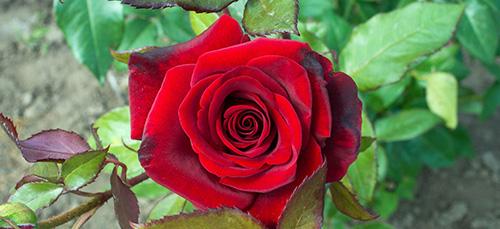
Rose
Roses are well-known for their beauty and scent. They are mostly included in bouquets and flower arrangements due to the different varieties and colors the plant offers. This woody perennial plant comes from the family Rosaceae. The plant has more than 300 species and thousands of cultivars worldwide. Roses grow in several forms – from shrubs, trailing, or climbing – with prickly stems.
Roses are generally classified into three main categories depending on the date of their introduction to the world. Old garden roses are called as such because they were introduced before 1867. They are often found in history through old paintings. Old roses thrive in warm and mild climates and are very fragrant. These historic roses only bloom once per season. Modern garden roses are species that came after 1867. Varieties under this classification are sturdy and disease-resistant. Modern roses are bred in different colors, shapes, and sizes. Perhaps the most popular modern rose is the hybrid tea rose with one large flower on one long stem. The last classification of roses is wild rose. Roses that grow in the wild for many years belong to this classification. Most wild roses, however, have been adapted into gardens over the years. Roses under this category have 5-petal flowers in a single bloom. Wild roses are often pink in color, and it is very rare to see white, red, and yellow wild roses.
The History Of Rose
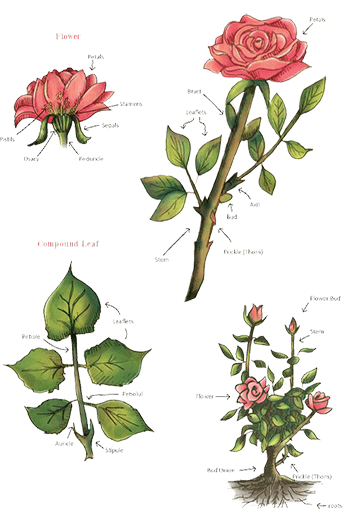 Roses are known to be one of the oldest plants in the world. Roses may have originated from Central Asia. Some records trace the plant to Iraq around 2000 BC, and some others show how useful the plant was during 500 BC in China. Around the same time, Confucius wrote about roses in the Imperial Gardens. During the Han Dynasty, the cultivation of roses became too immense that it threatened food production. Thus, the emperor ordered some roses to be plowed away.
Roses are known to be one of the oldest plants in the world. Roses may have originated from Central Asia. Some records trace the plant to Iraq around 2000 BC, and some others show how useful the plant was during 500 BC in China. Around the same time, Confucius wrote about roses in the Imperial Gardens. During the Han Dynasty, the cultivation of roses became too immense that it threatened food production. Thus, the emperor ordered some roses to be plowed away.
Roses are also popular with Romans. Roman emperors often bathe in water filled with rose petals. Egyptians also revere the flower so much that they have painted it on walls and artifacts as early as the 5th century. Early Christians, on the other hand, had a negative view of roses. They considered the flower as a symbol of paganism and the Romans. Church leaders warned the followers not to plant them. However, it somehow gained popularity so much so that roses were used in various religious ceremonies.
Several centuries later, roses are still widely known and kept on expanding all over the world. Rose Alba, thought to be introduced by the Romans to Britain, was cross-bred with other rose species. William Penn had 18 rose bushes shipped from England around 1699. There are also rose species native to North America. Currently, the American Rose Society has registered more than 40 types of roses.
Where This Plant Is Found
Roses are found worldwide. However, most of the rose species are native to Asia. Europe, North America, and Northwestern Africa also have a few rose species of their own. Currently, roses are grown and cultivated in many countries around the world for commercial purposes.
Related: The Complete Map of Edible Plants: Find Out What You Have in Your Area! (Video)
How To Identify Rose
Since there are several types of roses, one may find it confusing to identify one. But here are some key points so that you can identify a rose type based on its physical features:
- Shrub Rose: Shrub roses are the ones you usually find as hedge or ground covers. They grow from 36 to 84 inches tall.
- Hybrid Tea Rose: A hybrid rose has one large flower on top of a long stem. It blooms all throughout the season.
- Dwarf or Miniature Rose: Dwarf roses only grow around 6 to 36 inches tall. The leaves and flowers are proportionate to the height of the plant as well. A dwarf rose cannot thrive in cold climates since they are not budded.
- Climbing Rose: Roses under this category do not climb for real as true vines do. They are only called such because they have long canes that need support. Hence, they have to be attached to trellis, fences or other supportive structures. Without support, the plant will slump on the ground.
- Spray Rose: The stems of this rose type can hold several flowers at once. Examples of spray roses are polyanthas and floribundas.
- Rambler Rose: Rambler roses should not be confused with climbing roses. Though ramblers also require support such as pergolas and trellis, they are sturdier and taller than climbers. Additionally, ramblers bloom in a group of 7 flowers with 7 leaves.
How To Grow Rose
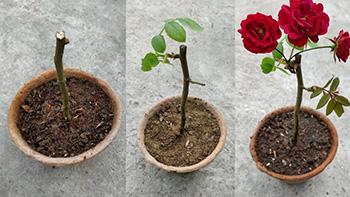 Growing roses is easy when you know what to do. First, you need to determine the location where you plant it. Roses require 6 to 8 hours of sunlight every day and organic, well-drained soil. Plant the rose in spring or fall. However, for bare-root roses, planting it in early spring is the best.
Growing roses is easy when you know what to do. First, you need to determine the location where you plant it. Roses require 6 to 8 hours of sunlight every day and organic, well-drained soil. Plant the rose in spring or fall. However, for bare-root roses, planting it in early spring is the best.
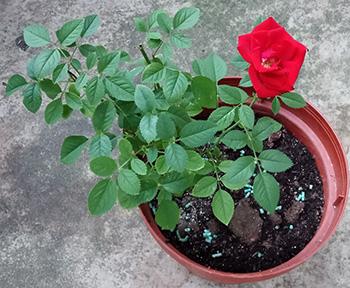 Bare-root and potted rose bushes need around 24 inches (61 cm) depth of soil. The planting hole needs to be wide so that roots have enough room to thrive. The crown should be at ground level for places with mild climates, and 2 to 3 inches (5 to 8 cm) underground for cold climates. Fill the hole with organic soil along with well-rotted manure, peat moss, and garden compost. Water thoroughly and add more soil around the base of the rose plant.
Bare-root and potted rose bushes need around 24 inches (61 cm) depth of soil. The planting hole needs to be wide so that roots have enough room to thrive. The crown should be at ground level for places with mild climates, and 2 to 3 inches (5 to 8 cm) underground for cold climates. Fill the hole with organic soil along with well-rotted manure, peat moss, and garden compost. Water thoroughly and add more soil around the base of the rose plant.
The water need of roses varies depending on the weather and soil. The main goal is to keep the soil moist (not too dry nor too wet) at all times. Also, keep in mind to keep the foliage dry, otherwise, the rose plant may succumb to diseases like powdery mildew and black spot. Before watering, check the soil with your finger. Typically, roses require 1 inch of water every week. Hence, it is best to use a soaker hose for this.
Check your rose plant frequently for diseases and pests. Applying fertilizer is also encouraged. A rose plant also requires pruning. Pruning is best when done in early spring. Cut about ¼ inch above the bud eyes to remove dead and broken canes.
Related: The 10 Medicinal Seeds You Should Plant for a Complete Backyard Pharmacy (Video)
How To Harvest This Plant
Rose petals are very fragile. To ensure that you harvest rose petals properly, follow these simple guidelines:
- Roses usually bloom in late spring or early summer. It is best to harvest roses just after they have bloomed.

- Choose the roses to harvest. The ideal roses to pick are the ones with outer petals opened, and those that have been well-exposed to the sun. Such flowers tend to have the best smell and taste.
 To harvest, wait for the dew to fully evaporate in the morning before harvesting. Bring a container with water outside. Use a garden scissor or pruner. Cut the stem longer than your desired length, especially if you want to put it on a vase. Put the rose in water as soon as you cut it. While the stem is still submerged in water, make a second cut about an inch from the bottom of the stem. This will allow more water to seep in through the rose and prevent wilting. Let the rose stay in the water until you use it.
To harvest, wait for the dew to fully evaporate in the morning before harvesting. Bring a container with water outside. Use a garden scissor or pruner. Cut the stem longer than your desired length, especially if you want to put it on a vase. Put the rose in water as soon as you cut it. While the stem is still submerged in water, make a second cut about an inch from the bottom of the stem. This will allow more water to seep in through the rose and prevent wilting. Let the rose stay in the water until you use it.- To dry roses, pluck the petals using your fingers. Place the petals in a single layer on absorbent paper as soon as you take them out. Make sure that the petals do not touch each other.

- Dry the petals in a shaded place. Do not ever place them directly under the sun because the color may fade faster due to too much heat. If you are using a dehydrator, layer the rose petals and ensure that they do not touch or overlap with each other. Dehydrate using a low setting. The time will depend on the brand of your dehydrator, so refer to the instruction manual.
- To store dried roses, keep the petals inside a dry, glass jar and store them in a dry place. Do not expose to direct sunlight.
What Rose Is Good For And The Natural Remedies Made From It
Roses have many benefits. Aside from being used in the kitchen, it also becomes an essential part of Traditional Chinese Medicine (TCM). TCM uses rose tea to help with stomach and digestive issues, irritability and mood problems, and sleep improvement, among many others.
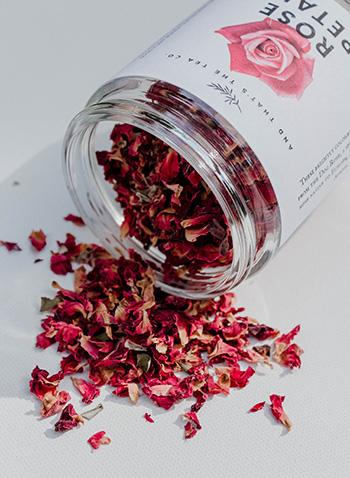
Rose has anti-inflammatory properties that soothe skin irritation such as rosacea and eczema. Many beauty products also make use of the rose as it provides many benefits to the skin. It promotes healthy skin by improving complexion and reducing skin redness and puffiness. The antibacterial properties of roses also help in alleviating acne, burns, and wounds. It even helps reduce scar occurrence.
Rosewater has also been used to help with sore throats. Though further study is required for this, there is strong anecdotal evidence to help promote its effectiveness on sore throat problems. The use of rose water also helps prevent and treat infections due to its antiseptic property.
Additionally, roses contain powerful antioxidants that promote cell health. It is also considered a mood enhancer with its anti-depressant and anti-anxiety effects. Rose petals make an excellent source of iron, calcium, and Vitamins A, C, and E.
Related: The Unnoticed Symptom That May Point to an Internal Inflammation (Video)
What Parts Of The Plant Are Used In Remedies?
Most people use rose petals in various recipes and herbal remedies. However, some other parts of the rose plant are also valuable. Rosehips and rose leaves are sometimes used to make rose tea in combination with petals. The leaves have a diuretic effect that helps flush out toxins. Meanwhile, rose hips contain flavonoids that ease pain in people with arthritis.
Related: 1 Cup Before Bed Shrinks Belly Fat All Night (Video)
A DIY Rose Water Recipe
Ingredients:
- ¼ cup dried rose petals
- 1 ½ cup distilled water
Steps:
- In a small saucepan, mix rose petals and water.

- Cover and bring to a boil using medium-low heat.

- Lower down the heat to simmer until the color of petals fades. The time depends on the flowers you use. Some variants take as little as 10 minutes, while some others may require up to 30 minutes.

- Remove from heat and let it cool for 20-30 minutes or so with the lid on.

- Strain the petals and transfer them to a dark and clean jar or bottle. Store in the refrigerator. This can last for up to 3 to 4 weeks.

How to Use:
Rosewater can be used in a variety of ways. Here is some of it:
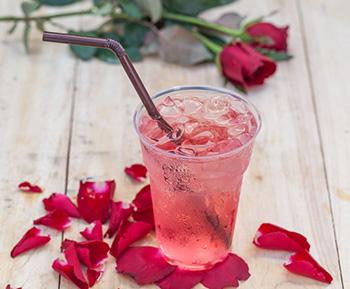
- Cooling effect: Put rose water in a dark-colored mist spray bottle. Spray on the face to freshen yourself up. While at home, it is best to store it inside the refrigerator for a better cooling effect.
- Sunburn remedy: Mix rose water and apple cider vinegar in equal parts. Spray onto sunburnt skin as needed.
- Herbal tea: You can drink rose water as is. But you may also use it when making any other herbal tea.
Related: Add This “Unusual Nutrient” to Coffee or Tea, to Effortlessly and Fully Empty Your Bowels Every Single Morning (Video)
What Plants Resemble Rose?
New wpDataTable
| Feature | Lisanthius(Eustoma Grandiflorum) | Camellia(Camellia spp.) | Double Impatiens(Impatiens spp.) |
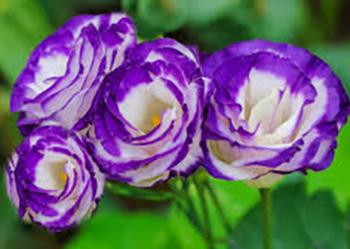 |
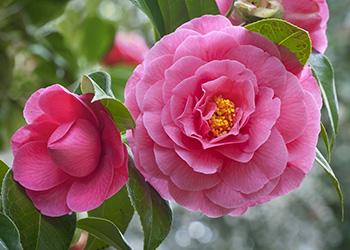 |
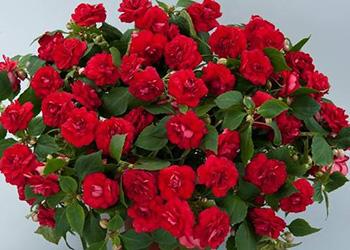 | |
| Size | Height: 1 to 3 ftWidth: 1 ft | Height: 6-15 ft, usuallyWidth: 5 to 7 ft | Height: 1-3 ftWidth: 1 to 3 ft |
| Leaves | Leaves grow in pairs | Glossy, green leaves in an oval shape that are alternately arranged | Leaves may either have alternate rounded lobes or serrated edge; underside of the leaves have tiny air bubbles giving them the silvery sheen color |
| Flowers | Each bloom measures between 2 to 3 inches and opens in a 5-petal funnel | Large and conspicuous, around 1 to 12 cm in width, blooms have 5 to 9 petals | Comes in various colors and double flowers |
| Stem | Each stem can grow between 8 to 10 blooms on branchlets; the stem is brittle and grows about 6 to 24 inches | Short stem that holds the flower at the end | Stem roots when in contact with soil |
| Scent | None | None | Sweet and nice |
Warnings And Cautions
Using rose is generally safe for most. But, people with underlying health concerns or those taking medications need to consult with their doctors first. People who are allergic to roses need to stay away from using them. A study also found that allergens from rose hips may lead to asthma. Hence, people who have asthma or are at high risk for it should avoid using rose in any remedy.
Rosewater/tea may also interact with medications like antidepressants and blood thinners.
Since rose contains high levels of Vitamin C, those who have Vitamin C-related conditions should refrain from taking it. Too much Vitamin C may lead to kidney stone formation, heartburn, diarrhea, etc. It can also worsen the symptoms of people suffering from iron-related disorders given how it increases the body’s iron absorption rate.
You may also like:
DIY Elderflower And Rosehip Salve
A Before-Bed Recipe to Sleep Like a Baby Again (Video)
25 Medicinal Plants You Can Forage Right Now
The Best Flowers to Attract Beneficial Insects to Your Garden

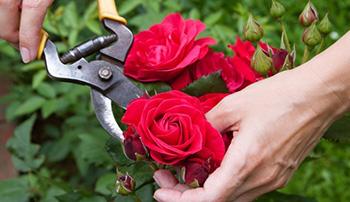
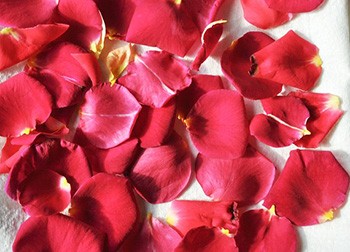 To harvest, wait for the dew to fully evaporate in the morning before harvesting. Bring a container with water outside. Use a garden scissor or pruner. Cut the stem longer than your desired length, especially if you want to put it on a vase. Put the rose in water as soon as you cut it. While the stem is still submerged in water, make a second cut about an inch from the bottom of the stem. This will allow more water to seep in through the rose and prevent wilting. Let the rose stay in the water until you use it.
To harvest, wait for the dew to fully evaporate in the morning before harvesting. Bring a container with water outside. Use a garden scissor or pruner. Cut the stem longer than your desired length, especially if you want to put it on a vase. Put the rose in water as soon as you cut it. While the stem is still submerged in water, make a second cut about an inch from the bottom of the stem. This will allow more water to seep in through the rose and prevent wilting. Let the rose stay in the water until you use it.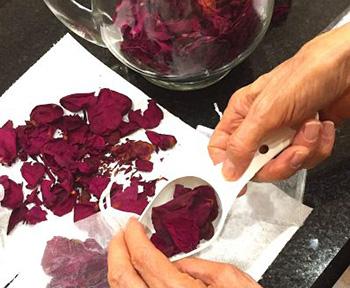
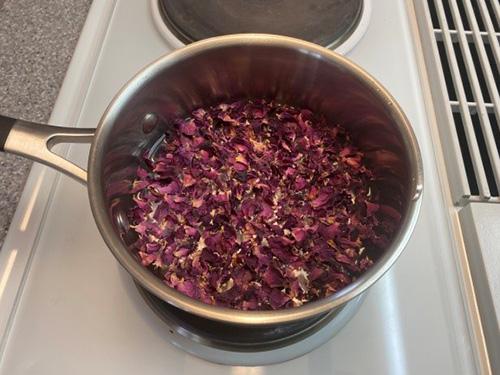
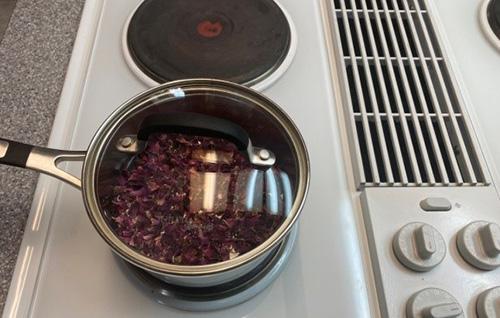
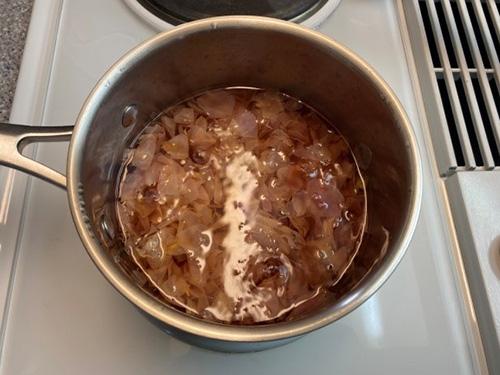
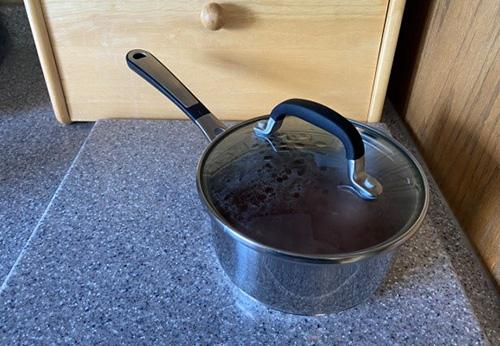
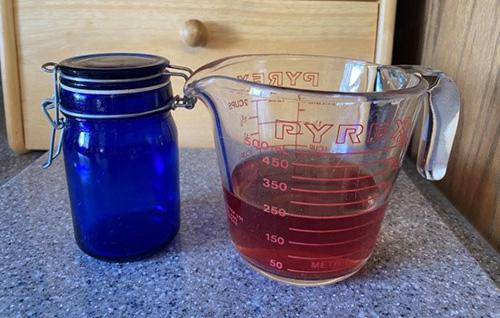
Thank You , for sending me all this interesting information.
Hi Eha,
Thank you for your continued support.
I have adopted plenty of roses, most don’t have scent, but they are beautiful. Is this a hollow beauty, do they have the essential oil’s and other constituents as others with scent? Thanks , nina
I’ve researched Vit C. Too much does NOT cause kidney stones.
According to the National Kidney Foundation, yes, taking too much Vitamin C can cause kidney stones “in some people”:
https://www.kidney.org/news/newsroom/newsreleases/0150#:~:text=Taking%20high%20doses%20of%20vitamin,family%20history%20of%20these%20stones.
I so wd like to buy rose body & perfume spray. Love the smell !